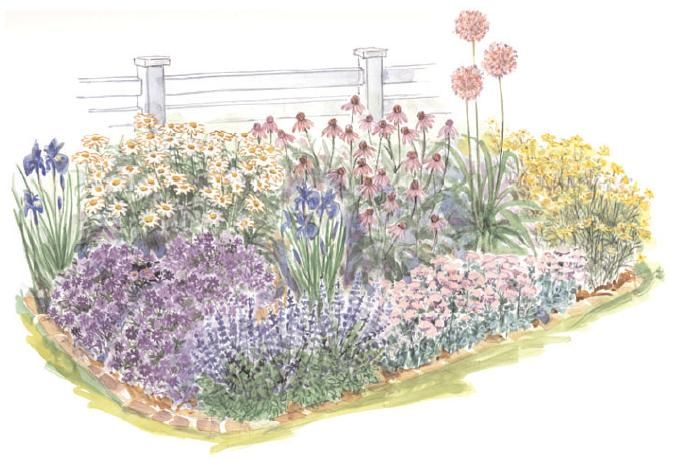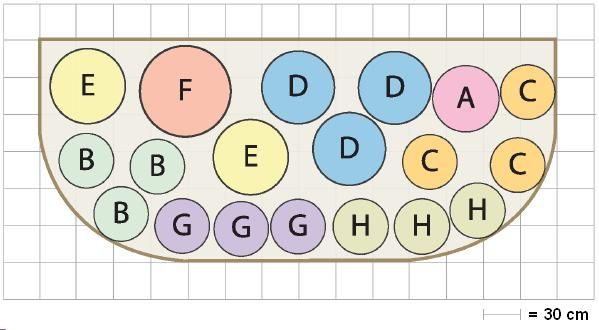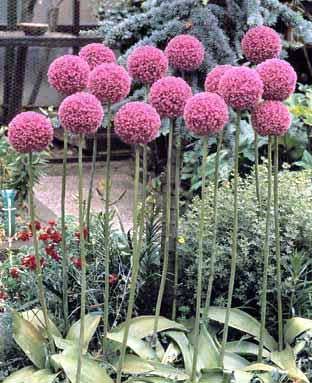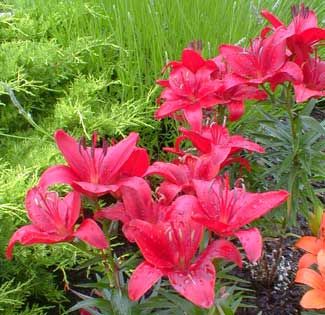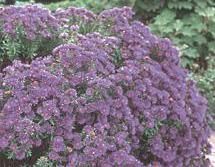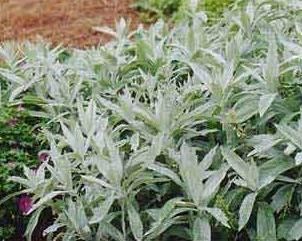A full sun corner in the garden
This easy-care, sun-loving design is a great introduction to perrenial gardening.
This plan features easy-to-grow, reliable plants that require minimal care. There will be something happening in the garden throughout the growing season. In spring, Siberian iris starts the parade. Summer is anchored by the cheerful flowers of purple coneflower and Shasta daisy (among others). The pink flowers of stonecrop complete the show in fall. This is a good starting plan for anyone interested in perennials.
Plant list:
| A. Ornamental Onion (Allium giganteum) (1) Lilac-pink globular flower on a tall stalk, blooms in early summer, foliage is a cluster of 18" long 2" wide leaves. Hardy bulb, Zones 4-8, 3-5' tall. |
|
| Alternative plant: Asiatic Lily (Lillium Asiatic) Hardy bulb, various colors available, blooms June to July on single stalks, plant a group of three. Zones 5-8, 2-5' tall. |
|
|
B. Michaelmas Daisy (Aster n.a. "Purple Dome") (3) |
|
| Alternative plant: Wormwood (Artemisia "Valerie Finnis") Silver foliage and non-invasive. Zone 4-8, 15-18" tall. |
|
| C. Tickseed (Coreopsis v. "Moonbeam") (3) Pale yellow daisy-like flowers much of summer, fine textured foliage, 1992 Perennial Plant of the Year, Zone 5-9, 18-24" tall. |
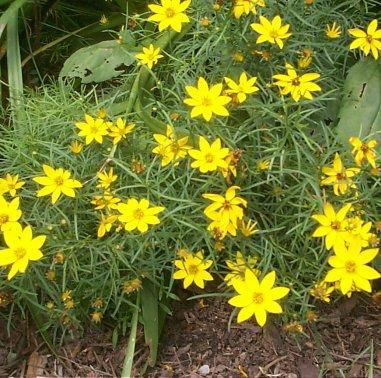 |
| Alternative plant: Chrysanthemum (Dendranthema "Clara Curtis") Pink daisy-like flowers all summer. Zones 5-9, 18-24" tall. |
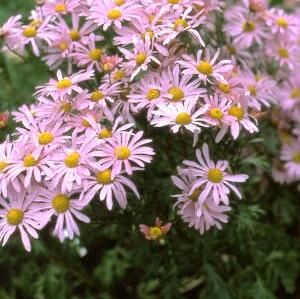 |
| D. Purple Coneflower (Echinacea purpurea) (3) Rose petals on a prominent cone center, blooms mid to late summer, good cut flower and loved by goldfinches. Zones 3-9, 30-36" tall. |
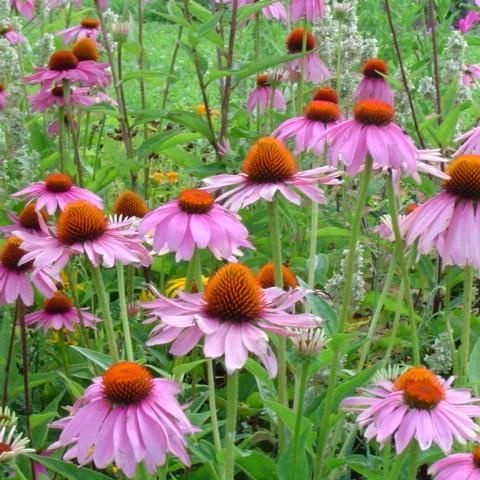 |
| Alternative plant: Black-Eyed Susan (Rudbeckia fulgida "Goldsturm") Deep yellow flowers with dark center, easy to grow. Zones 3-9, 24" tall. |
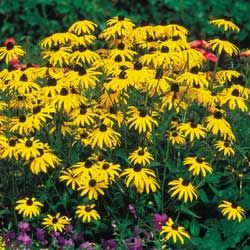 |
| E. Siberian Iris (Iris siberica) (2) Flowers are white, purple, blue, or violet, bloom in late spring, foliage is linear and forms clumps. Zones 4-8, 30-36" tall. |
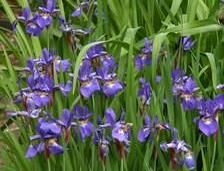 |
| Alternative plant: Daylily (Hemerocallis spp) Various colors are available, summer time blooms, grass-like foliage in clumps, divide every 2-4 years. Zones 3-9, 20-30" tall. |
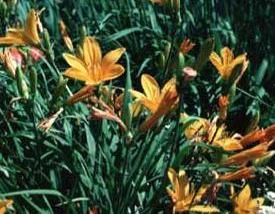 |
| F. Shasta Daisy (Leucanthemum "Becky") (1) Good upright form, flowers are classic white petals with yellow centers, long-time summer blooms. Zones 4-9, 30-36" tall. |
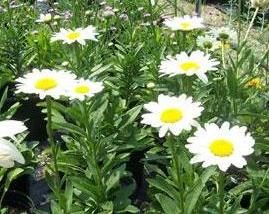 |
| Alternative plant: Gayfeather (Liatris spicata) Pink or white blooms on a tall spike, blooms from the top down in summer, attracts butterflies. Zones 3-9, 36-40" tall. |
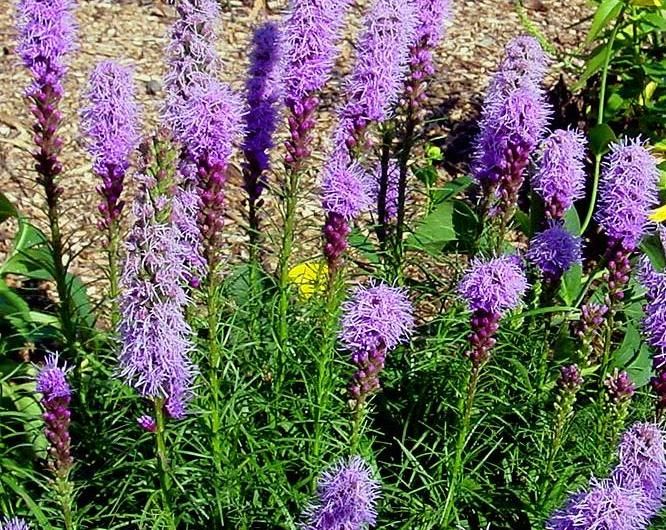 |
| G. Catmint (Nepeta x. faassenii "Walker's Low') (3) Compact, mounding plants, lavender-blue flowers in summer, gray-green foliage. Zones 3-8, 12-15' tall. |
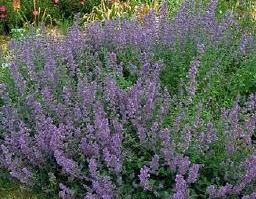 |
|
Alternative plant: |
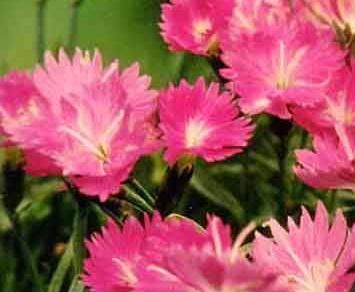 |
| H. Stonecrop (Sedum x 'Frosty Morn') (3) Light pink flowers in late summer and fall, foliage is edged with white. Zones 3-9, 12' tall. |
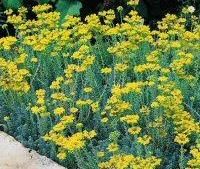 |
| Alternative plant: Creeping Phlox (Phlox subulata) Very early spring blooms in white, pink or blue, low-growing foliage resembles moss. Zones 3-8, 4' tall. |
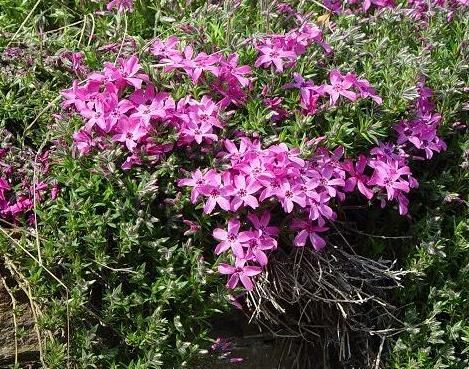 |
Before You Begin
Preparation is the key to creating a garden that will offer a lifetime of pleasure. Before you head to the nursery or lift a spade, take the time to review all garden plan materials. Ask yourself the following questions:
Do I have a suitable location for this plan? The layout diagram shows the dimensions for the plan as designed. In general, you can enlarge or reduce the size of the garden by adding or eliminating plants, although the character of the garden may change if you alter the size dramatically.
Does my yard offer the right conditions? Check the plant list carefully to see whether the plan will do best in full sun. (In many cases, the alternative plants list includes varieties that will grow in other zones.)
Does my soil need improvement? Most plants will survive in a variety of soil conditions, but well-drained, moist (but not soaked) soil is generally best. To test your soil, wet it thoroughly with a hose, wait 24 hours, then squeeze a clump in your hand. If the soil forms a ball that holds together, but breaks up easily when you poke it with your finger, your soil is ideal. If the soil won't hold its shape when squeezed, it is probably too sandy. If the clump doesn't break up easily, the soil may be too clay. In either case, you can improve your soil by mixing in organic matter like compost or peat moss.
Creating the bed
To lay out your bed, use a garden hose to mark the edges. When you are satisfied with the layout, use striping paint (available at many home centers) to mark the outline. (Or, sprinkle flour along the hose for a more temporary mark.). Using a sharp spade, dig along the marked line to set the edge of your bed.
If the garden location is currently covered with lawn, you have a couple of options. For smaller areas, you can strip the sod using a straight-edged shovel. To make this easier, wet the area thoroughly, then use the shovel to cut the lawn into strips that are the width of the shovel and about three feet long. Use the shovel to pry up and roll back the strips of sod. Once the sod is removed, you can loosen the underlying soil with a shovel or a power tiller. For larger areas covered by lawn, consider using a heavy-duty garden tiller to grind the sod into the underlying soil. This has the twin benefits of adding organic matter to the soil and eliminating the need to discard or compost sod.
Regardless of how you are preparing your bed, be sure to use this opportunity to mix in organic matter (such as compost, peat moss, or rotted manure) and loosen the soil at least 6 inches deep, or even 8 to 12 inches if you can. Don't mix in fertilizer unless your soil test shows a need; in general, excessive amounts of fertilizer will do more harm than good.
After your bed is prepared, water it thoroughly and wait a week. This will allow some weed seeds to germinate. Remove these seedlings or dig them back into the soil. If you choose to use chemicals to kill the weeds, follow the instructions to the letter, including the time to wait after application before planting.
Edging
Most beds are easier to maintain if they have an edging that keeps surrounding grass or vegetation from invading. Choose plastic, metal, stone, or brick -- whatever you prefer. If you have lawn around your bed, consider also including a mowing strip, a 6- to 12-inch-wide swath of masonry or stone set even with the surrounding soil.
Planting
If you have all of your plants on hand, keep them in their pots and set them out on the planting bed. This will give you a preview of how the bed will look and allow you to make adjustments. Use the tags that come with the plants to ensure that the spacing is correct. Don't worry that the bed looks sparse; the young plants need room to grow.
When you're satisfied with the arrangement, plant your garden from largest to smallest container. Set these plants in soil at the same level they were growing in the pot. Firm the soil around each plant with your hands, then water thoroughly.
As you place each plant, it's a good idea to add mulch to conserve moisture, cool the roots of plants, and protect the soil from washing away in the rain.
Care and maintenance
The first season of growth is the most critical for your garden. A good guideline is to water thoroughly every other day for the first two weeks, then twice weekly for the remainder of the first season. The following year, you can let nature take its course, supplementing dry periods with deep watering.
You should also be diligent about weeding your bed during the first year. As the plants mature and fill in, there will be fewer opportunities for weeds to gain a foothold. A thick layer of mulch will also help keep weeds in check.
Most plants will thrive with only minimal care. Apply a general fertilizer according to package directions in the spring after growth has started.
Articole asemănătoare
-
Fructe si legume pentru o minte sanatoasa
Rosiile bine coapte sunt excelente in salate, ca gustare, gatite in diverse moduri, dar cati dintre cei care le mananca de fiecare data cu atata placere stiu ca in tomate se gaseste si un puternic antioxidant, licopenul, ce protejeaza organismul de actiunea nociva a radicalilor liberi. Iar in timp banalele rosii (le puteti asocia alte legume si eventual putin ulei de masline) nu mentin doar sistemul imunitar si cel digestiv, dar mentin si sanatatea mintii si mai ales memoria sau capacitatea de concentrare.
-
Intretinerea gradinii in luna noiembrie
Gradina poate fi frumoasa si in penultima luna a anului calendaristic, noiembre, in culori iernatice. Chiar daca este putin cam devreme sa stim ce ne rezerva anotimpul rece, un lucru este cert: animalele din gradina vor avea nevoie de ajutor, chiar si daca va fi o iarna blanda.
-
Detoxifierea organismului, o cerinta a timpurilor noastre
Pentru a ilustra cat de importanta este calitatea alimentelor consumate la fiecare masa, inchipuiti-va organismul ca pe o masinarie a carei functionare depinde in buna masura de calitatea combustibilului.
-
Intentii sanatoase in 2011
A scapa de kilogramele in plus, miscare mai multa, alimentatie sanatoasa, evitarea stresului - acestea si multe altele ar trebui sa apara pe lista
-
Pastrarea fructelor in stare proaspata
Valoarea alimentara deosebita a fructelor, datorata continutului in zaharuri usor asimilabile (glucoza si fructoza), acizi organici, saruri minerale si microelemente, justifica includerea lor in ratia zilnica a oamenilor.
